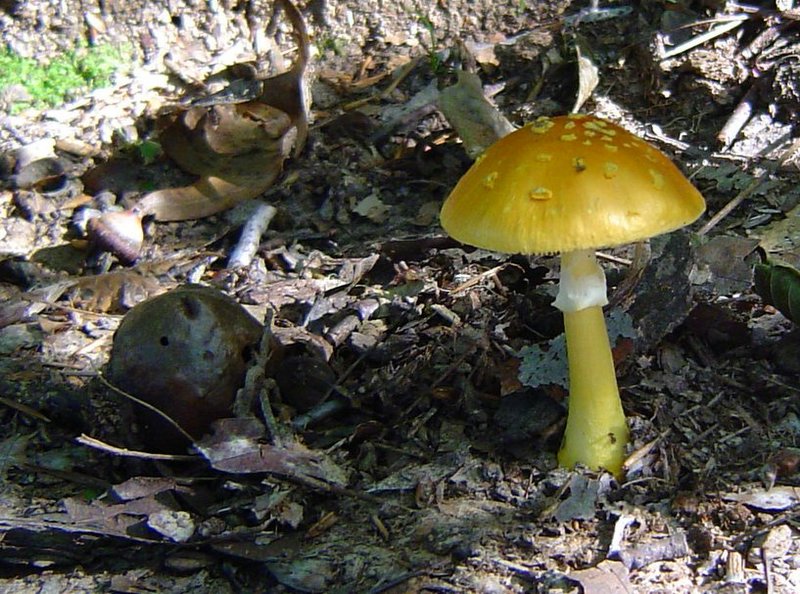Most survivalists know the importance of planning ahead and this test should be a part of your wilderness prepping. It’s crucial to determine which plants are edible before setting out on your trek. You could even bring photos of those plants with you to make sure you’re selecting the right plants for consumption. But as with anything in the wilderness, if you’re on the fence about whether it’s safe or not, it’s best to leave it alone and move on.
What to Avoid
There are even cases where one part of the plant is commonly eaten, while another is deadly poisonous.
These plant parts are:
- Roots.
- Stems.
- Leaves.
- Flowers.
- Fruit and seeds (including nuts and berries).
Don’t assume that just because one part is edible, others are, as well.
Not Safe to Eat
- Mushrooms that you are not familiar with.
- Any plants growing near contaminated water.
- Plants with shiny leaves.
- Plants with groups of three leaves.
- Plants that create a stinging sensation when touched.
- Plants with a foul odor.
- Any plants that have a bitter or soapy flavor.
- Plants that have a milky sap in the stems.
- Beans, bulbs or seeds which grow inside pods. While some of these are safe to eat, proportionally there’s a greater chance of danger from them.
- Any grains with pink, purplish or black spurs.
Doing the Universal Edibility Test
Pick plants that are in abundance to run this test. Testing a plant that is in abundance will provide you with more potential food to eat.
If you have multiple members in your group, only one should try a particular plant or plant part. Different people can try different plants or plant parts.
You also want to fast for eight hours before starting the test, drinking only water. This will ensure that you are getting the results of the plant you are testing, not any other food. Likewise, during the test, don’t eat or drink anything but water.
Do the following steps in order:
- Prepare the plant or plant part in the manner you expect to eat it. Cooking can eliminate chemical compounds and pathogens which otherwise would be dangerous to eat.
- Cool a portion and touch the cooked, but cooled portion briefly, checking for any burning sensation. Wait a few minutes to see if the area that had been in contact with the plant becomes red or gets a rash.
- Hold a small amount of the cooked, cooled plant part to the skin, allowing it to sit there for 15 minutes. Once again, look for burning, redness, itching, rash or blistering.
- Touch a small amount of the plant to the outer part of your lip, checking for any burning or itching. Wait 15 minutes for any reaction.
- Take a small portion (about ½ tsp.) and hold it on the tongue, without chewing, for 15 minutes; then spit it out. Once again, check for any symptoms, such as burning or itching.
- Chew a bite of the plant thoroughly for 15 minutes, without swallowing.
- If, at the end of 15 minutes, there are no symptoms from contact with the plant, swallow it. Wait eight hours for any reaction. The main symptoms you are looking for in this time are abdominal pain and/or vomiting. If either occurs, drink a lot of purified water.
- If there are no ill effects from the bite of food after eight hours, eat a small portion, about ¼ cup and wait another eight hours. If no negative symptoms occur, you can declare the plant safe to eat.
Have you used this method to test the edibility of a plant? Do you have any other tips for ensuring that a plant or plant part is safe to eat?
Article Source: Off The Grid News
